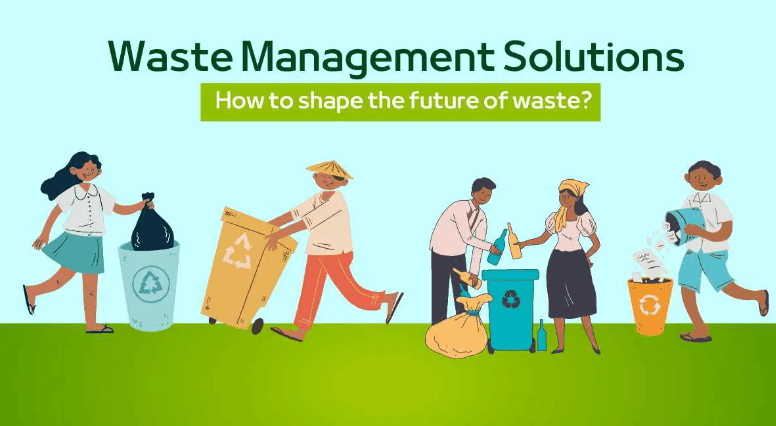5 Waste Management Strategies for Reducing Waste

Reducing waste is a critical concern in today’s world, as it impacts environmental health, resource conservation, and sustainability. Effective waste management solutions are essential to minimize the waste footprint. This blog post will explore five innovative strategies for reducing waste and helping individuals and organizations make more environmentally friendly choices.
1. Implementing Recycling Programs
Understanding Recycling
Recycling is the process of converting waste materials into new, usable products. It is one of the most common waste management solutions employed by households, businesses, and municipalities worldwide.
Benefits of Recycling
- Conserves Resources: By recycling materials like paper, plastic, and metal, we reduce the need for new raw materials.
- Reduces Landfill Waste: Recycling diverts waste from landfills, reducing environmental pollution and extending landfill lifespan.
- Promotes Sustainable Living: Recycling encourages a cycle of sustainability, reducing the overall environmental impact.
How to Implement
- Segregate Waste: Set up separate bins for recyclables, organics, and trash.
- Educate and Encourage: Inform family members or employees about the benefits and methods of recycling.
- Use Recycled Products: Support the recycling industry by purchasing products made from recycled materials.
2. Composting Organic Waste
Understanding Composting
Composting is the natural process of recycling organic matter, such as food scraps and yard waste, into a valuable fertilizer that can enrich soil and plants.
Benefits of Composting
- Enriches Soil: Compost adds nutrients and improves soil health, promoting plant growth.
- Reduces Methane Emissions: By diverting organic waste from landfills, composting reduces methane emissions, a potent greenhouse gas.
- Lowers Waste Disposal Costs: Composting decreases the amount of waste sent to landfills, potentially reducing waste disposal fees.
How to Implement
- Set Up a Compost Bin: Either in your backyard or using a service provided by waste management organizations.
- Learn What to Compost: Familiarize yourself with compostable materials, including fruits, vegetables, yard trimmings, and more.
- Maintain Your Compost: Regularly turn and monitor your compost to ensure it decomposes effectively.
3. Reducing Consumption and Packaging
Understanding Consumption Reduction
Minimizing the amount of waste created in the first place is one of the most effective waste management strategies. This can be achieved by reducing consumption and choosing products with minimal packaging.
Benefits of Reducing Consumption
- Decreases Waste Production: Less consumption means less waste generation.
- Saves Money: Buying only what is necessary can lead to significant cost savings.
- Conserve Resources: Reducing consumption lessens the demand for natural resources.
How to Implement
- Buy Bulk and Unpackaged Goods: Choose products with less packaging and buy in larger quantities to reduce waste.
- Use Reusable Items: Opt for reusable bags, containers, and other products to minimize single-use waste.
- Repair and Reuse: Instead of discarding items, try repairing or repurposing them.
Read also Home of Time Huy Cuong • Better Limit • 2023
4. Designing Products for Reuse and Longevity
Understanding Sustainable Design
Product design plays a crucial role in waste management solutions. Designing products for reuse, repair, and longevity can significantly reduce waste generation.
Benefits of Sustainable Design
- Encourages Reuse: Products designed to be durable and repairable are used for longer periods, reducing waste.
- Supports Circular Economy: Designing for product life extension contributes to a circular economy, where products and materials are reused and recycled.
- Reduces Environmental Impact: Sustainable design minimizes the waste associated with the production and disposal of products.
How to Implement
- Choose Durable Products: Opt for products known for their durability and longevity.
- Support Companies with Sustainable Practices: Purchase from companies that design products with reuse and recycling in mind.
- Advocate for Change: Encourage manufacturers and policymakers to prioritize sustainable product design.
5. Educating and Engaging the Community
Understanding the Power of Education
Education and community engagement are vital in promoting waste reduction and encouraging the adoption of waste management solutions.
Benefits of Education and Engagement
- Increases Awareness: Educating individuals about the impact of waste and the importance of reduction can lead to behavior change.
- Encourages Participation: Engaged communities are more likely to participate in waste reduction programs and initiatives.
- Fosters Innovation: An informed public can drive demand for innovative waste management solutions and sustainable practices.
How to Implement
- Conduct Workshops and Seminars: Organize educational events to teach waste reduction techniques and benefits.
- Promote Waste Reduction Initiatives: Support local and national campaigns focused on minimizing waste.
- Lead by Example: Demonstrate waste reduction practices in your own life and share your experiences with others.
Conclusion
Reducing waste is an imperative task that requires the collective effort of individuals, businesses, and communities. By implementing these five waste management strategies, we can significantly reduce our waste footprint and move towards a more sustainable future. Remember, every small step counts in the journey towards environmental stewardship and sustainability. Adopting even one or more of these practices can make a substantial difference in waste reduction efforts.




